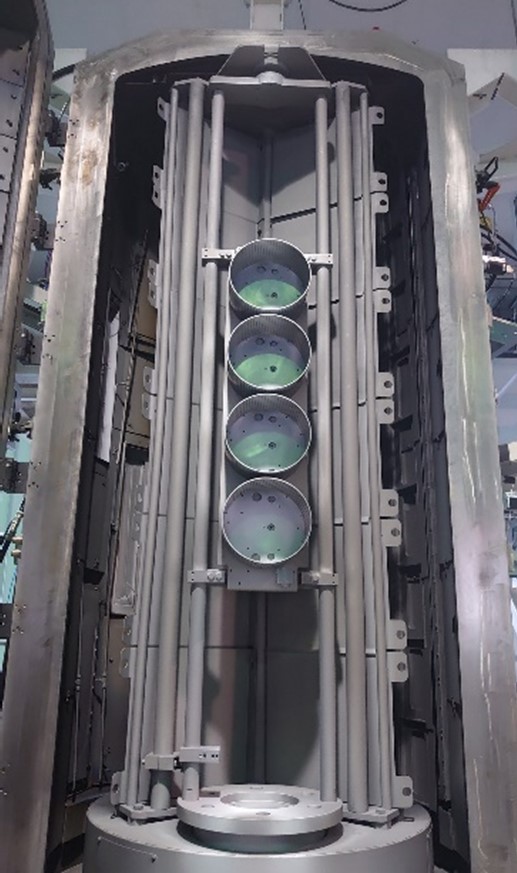Coatings for Tokamak-type fusion reactors such as ITER, and associated experiments such as SPIDER, MITICA, WEST or ELISE require specific skills and equipment’s. In this context, the French group HEF/IREIS has developed a new equipment called TSD 2800 R, that combines magnetron sputtering, PECVD, and arc deposition sources dedicated to thin film solution of Molybdenum deposit

“Physical vapour deposition and plasma-assisted chemical vapour deposition (PVD and PACVD) are environmentally friendly vacuum deposition technologies involving a deposition of material on the surface of the parts to be treated. These are interesting for fusion thanks to the possibility to obtain coatings having thicknesses which can vary from several nanometres to several tens of microns that can be applied to a great variety of materials, obtaining very good properties of the deposited film.
Antonio Masiello, Project Manager at Heating and Current Drive Program at Fusion for Energy
This equipment is unique regarding the size of the chamber that measures 2.57 m in height and has a rotation diameter of 50 cm. Furthermore, the machine can support axial loads of up to three tons which make it especially suitable for coatings of large and complex components.
New use for innovative coatings applied to large cylindrical tools in the tyre industry
After the fusion application, the TSD 2800 R found a new promising use in pneumatic sector. During the fabrication, rubber tires are shaped in molds and cured at high temperature in order to be more elastic. The tire is then cooled down to acquire its perfect shape and its final properties. At the end, various surface treatments and release products are applied to be able to release the tire from the mold.
However, these steps are polluting and not very durable and due to the size of the mold, the frequently used PVD techniques were not accessible. To tackle this challenge, HEF Group leveraged on its large coating equipment TSD 2800 R and all the PVD thin fin deposition methodology initially developed for fusion application

“We had to develop, design, and validate our ability to deposit thin films (from 1 to 8 µm) on large surfaces (greater than m2) with an adherent deposit of uniform thickness. We used our expertise to produce a vacuum of 10-7 mbar. We had to work on the positioning of the material sources in the space to create a homogeneous and controlled flow of material. At the same time, the parts are rotating inside the enclosure to obtain a deposit that was both adherent and homogeneous over the entire surface.”
Bertrand Nicollet, Innovation Director, HEF
This PVD process can now apply hard and easy to demould coatings at the surface of large and complex molds, speeding up the tire production and reducing the need for specific surface treatment.
A springboard for a new product range and further business opportunities
The qualification of this TSD 2800 range thanks to the requirements from fusion also opens the doors to an even more ambitious range currently being qualified (4900 range with a height of 4.9 meters and a base of 2.4 meters). On the latest range qualified and currently available on the market, HEF already received expression of interest and orders from industries.
“Our first new customers include the deposition of thin films on nuclear fuel rods 2.5 meters high and 15 mm in diameter to prevent corrosion. We are also depositing thin films on 1-meter-wide blades for cutting fabric to prevent abrasion. Without the fusion technology market, we would not have been able to invest in and develop these ranges”
Bertrand Nicollet, Innovation Director, HEF
“Europe’s contribution to ITER is offering companies the opportunity to increase their competitiveness and to transfer the know-how of fusion applications to non-fusion markets”.
Carmen Casteras, Intellectual Property and Technology Transfer Officer, Fusion for Energy.